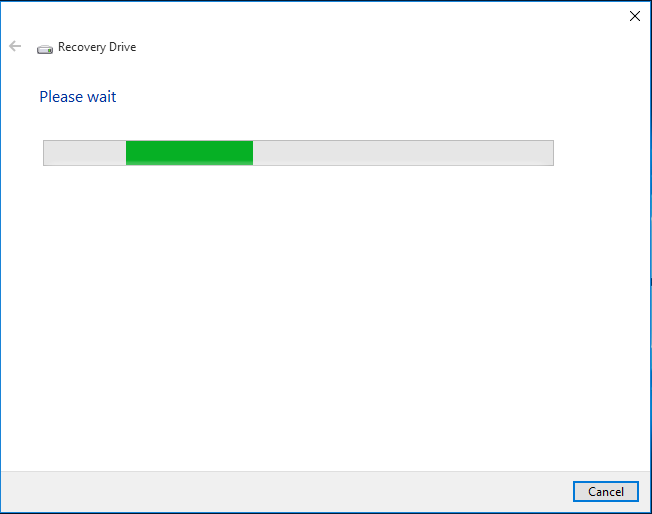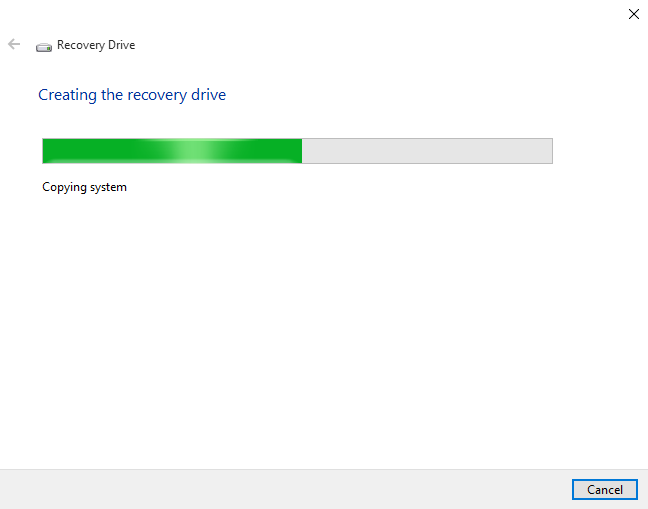If you run into problems with your PC, a USB recovery drive can help you troubleshoot and fix those problems, even if your PC won't start.
Your PC might have come with a recovery image that’s used to refresh or reset your PC. The recovery image is stored on a dedicated recovery partition on your PC, and is typically 3-6 GB in size. Windows 10 includes a built-in tool which is named "Recovery Media
Creator" to create a USB recovery drive. Windows will let you know how big the recovery partition is, and you'll need a USB flash drive at least that big.
Warning
Creating a recovery drive will erase anything already stored on your USB flash drive. Use an empty USB flash drive or make sure to transfer any important data from your USB flash drive to another storage device before using it to create a USB recovery drive.
Follow these steps to operate:
1.
Run
Recovery Media Creator
%WinDir%\System32\RecoveryDrive.exe
tap or click the Cortana's search box which tips the words "Search the web and Windows", and type or paste "recoverydrive" in there, and then tap or click on the words which reveal on the Cortana's pop-up parts:
recoverydrive
Run command
or
Settings
Create a recovery drive
Then tap or click "Yes" button, then the "Recovery Media Creator" is running.
2.
After the recovery drive tool opens, make sure the Copy the recovery partition from the PC to the recovery drive check box is selected, and then tap or click Next.
Note
The checkbox is greyed out when your PC doesn’t have a recovery partition. The recovery drive will include only the recovery tools and a bootable image, but not a recovery image to use for refreshing or resetting your PC.
3.
Insert a USB flash drive into your PC that is at least as large as the size indicated on the screen.
4.
Tap or click the USB drive you would like to use for your recovery drive, then tap or click Next.
5.
Tap or click Create.
The recovery image and necessary recovery tools will be copied to your USB flash drive, which will take a while, depending on your PC and the size of the recovery image.
6.
Tap or click Finish.
7.
Remove the USB flash drive.
This is now your Windows 10 recovery drive, and you'll need it if you ever need to refresh or reset your PC. Keep it in a safe place and don't use it to store other files or data.








